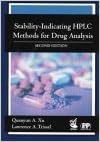Guidelines for Stability Testing of Amorphous Drug Forms
1) Purpose
The purpose of this SOP is to provide a standardized procedure for conducting stability testing of amorphous drug forms. Amorphous drug forms are characterized by their lack of a defined crystalline structure, which may affect their physical and chemical stability. The stability testing aims to determine the shelf life, storage conditions, and degradation pathways of these drugs.
2) Scope
This SOP applies to all amorphous drug forms produced or handled by the organization, including new chemical entities (NCEs), reformulated products, and generics. It is intended for use by formulation scientists, quality control personnel, and others involved in the testing and evaluation of amorphous drug stability.
3) Responsibilities
Formulation Scientist: Responsible for designing the study and selecting the appropriate storage conditions.
Quality Control (QC) Team: Responsible for performing the tests and recording results as per the SOP and protocol.
QA Personnel:
Responsible for reviewing data, approving protocols, and ensuring compliance with regulatory standards.4) Procedure
4.1 Study Design:
- Identify key characteristics of the amorphous drug form that could influence stability (e.g., hygroscopicity, glass transition temperature).
- Select appropriate analytical methods for detecting changes in these characteristics (e.g., Differential Scanning Calorimetry, Powder X-Ray Diffraction).
- Define storage conditions (e.g., temperature, humidity) based on the drug’s intended market and regulatory requirements.
4.2 Sample Preparation:
- Prepare samples from multiple batches to ensure representativeness.
- Ensure samples are properly labeled and packaged to prevent contamination or degradation during storage.
- Store samples under designated conditions in stability chambers.
4.3 Testing Schedule:
- Conduct initial testing to establish baseline data.
- Perform stability tests at predetermined intervals (e.g., 1, 3, 6, 12 months) or as specified in the protocol.
- Evaluate physical and chemical parameters such as dissolution rate, moisture content, and purity.
4.4 Data Analysis and Reporting:
- Compile and analyze data to detect trends over time.
- Generate a stability report summarizing the findings, with recommendations for shelf life and storage conditions.
- Submit the report for QA review and archiving.
5) Abbreviations, if any
QC: Quality Control
QA: Quality Assurance
NCE: New Chemical Entity
6) Documents, if any
Amorphous Drug Stability Protocol: Document detailing the study plan.
Method Validation Report: Report validating the analytical methods used.
Stability Testing Records: Data records of test results.
7) Reference, if any
ICH Q1A(R2): Stability Testing of New Drug Substances and Products
USP: United States Pharmacopeia Guidelines for Stability Testing
8) SOP Version
Version 1.0

